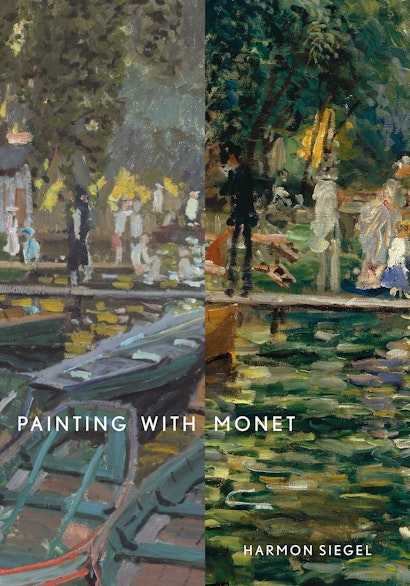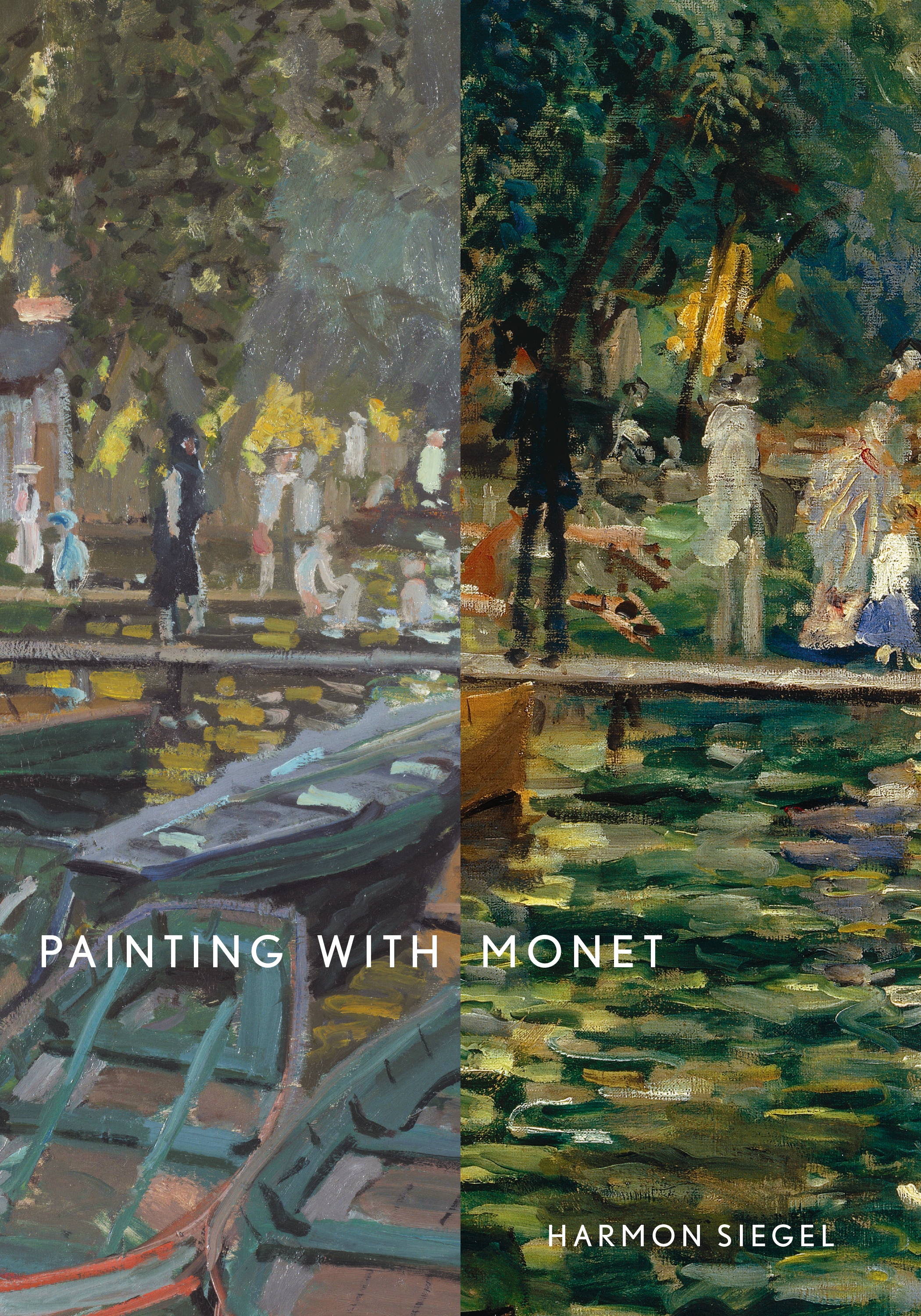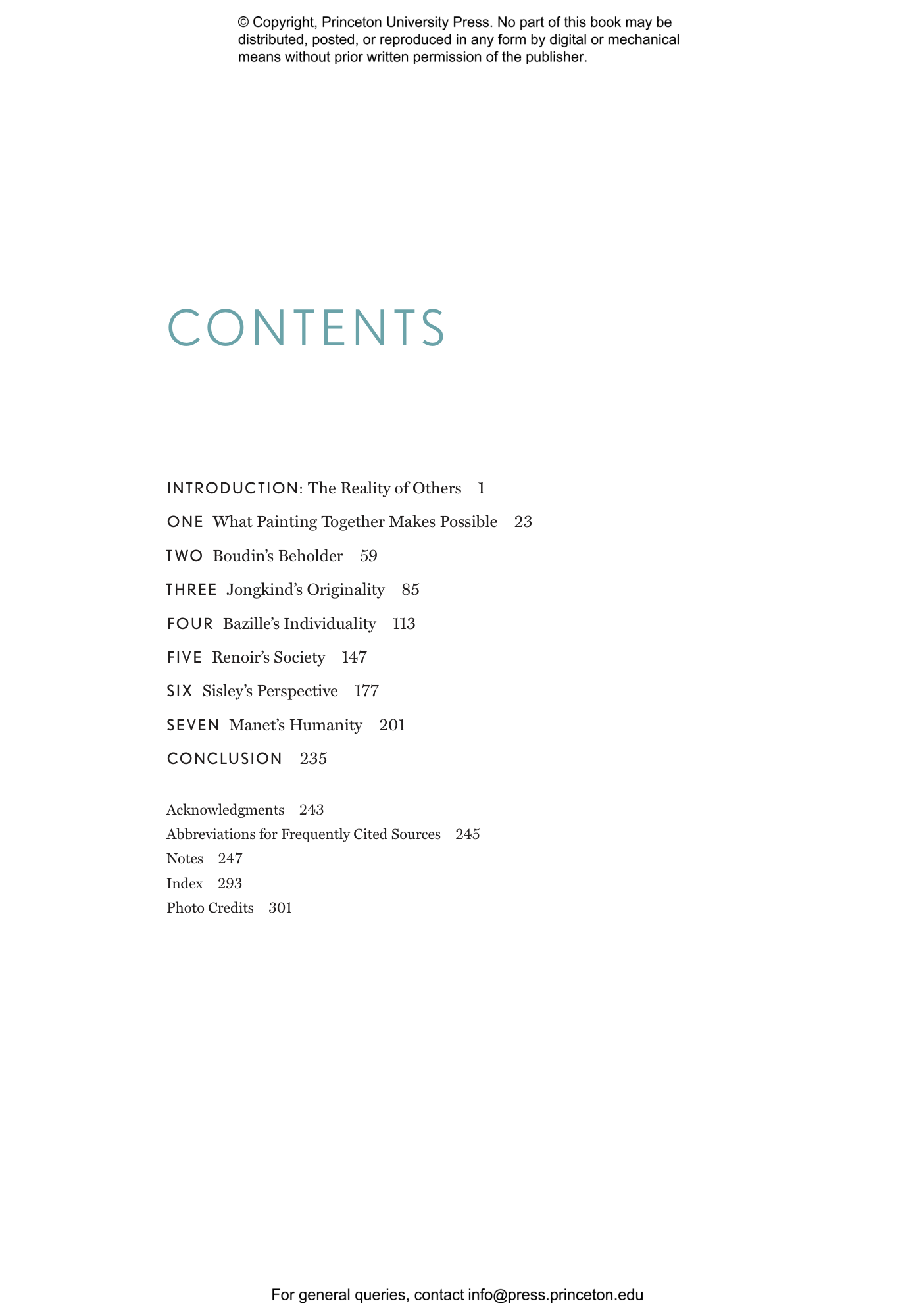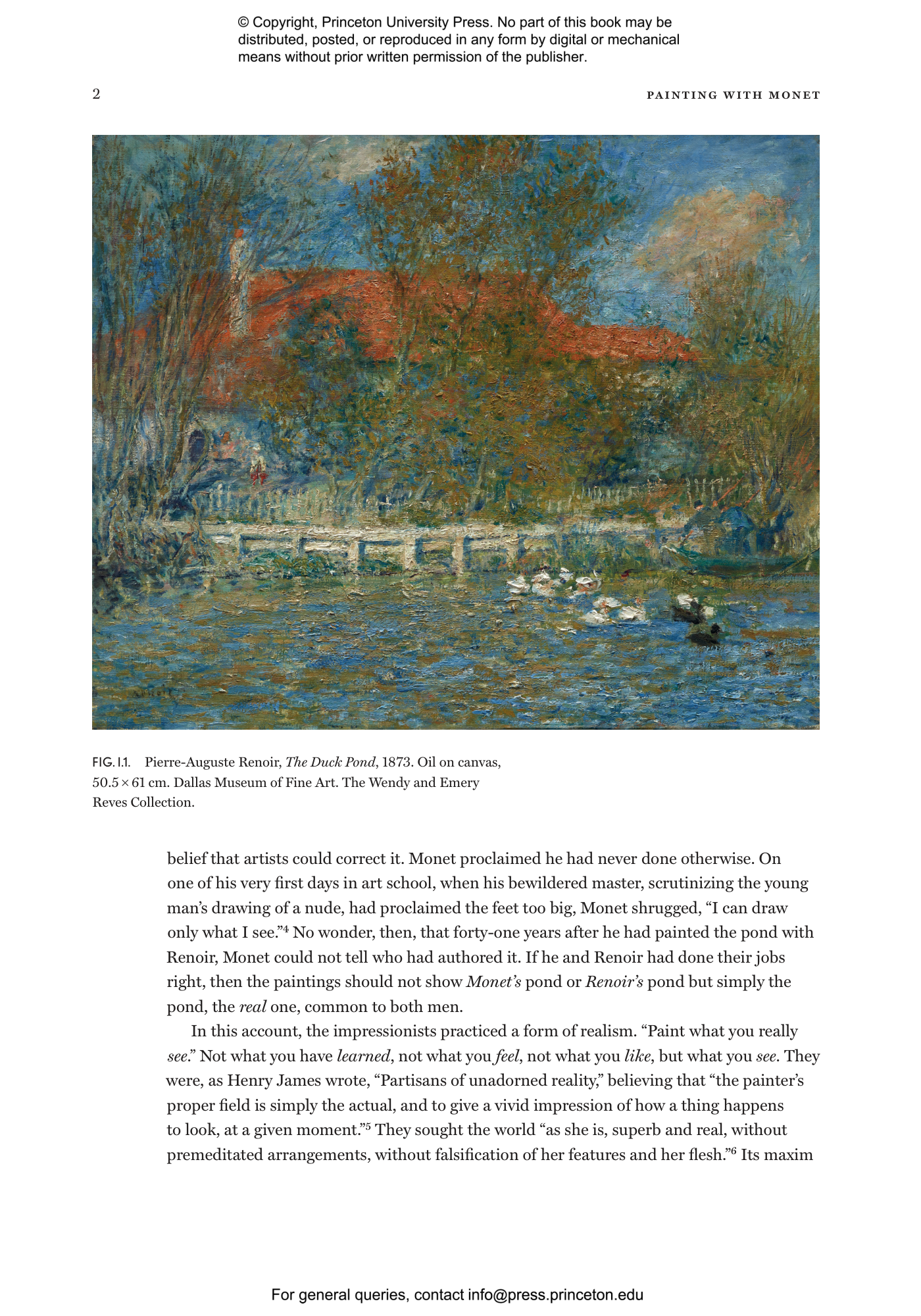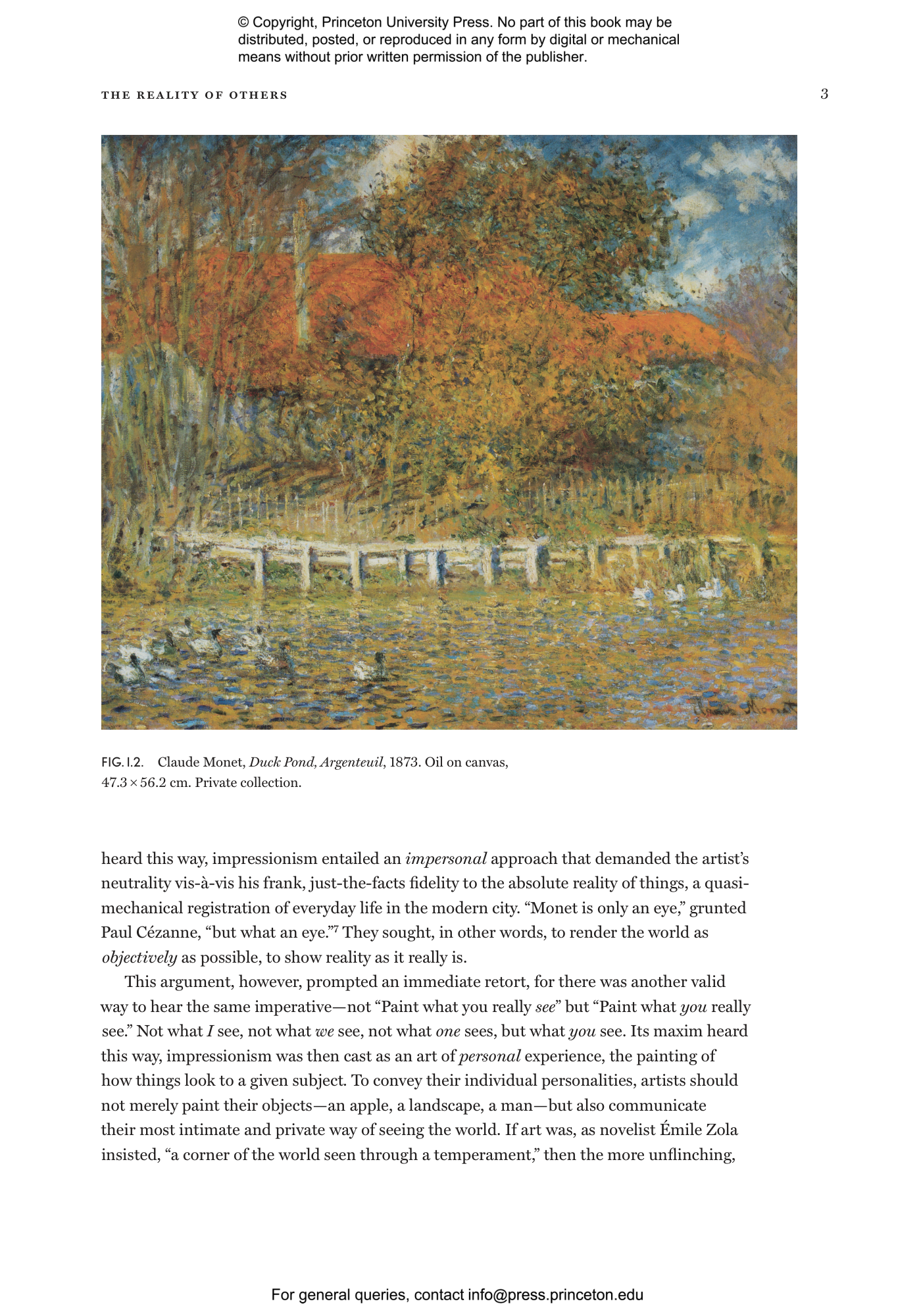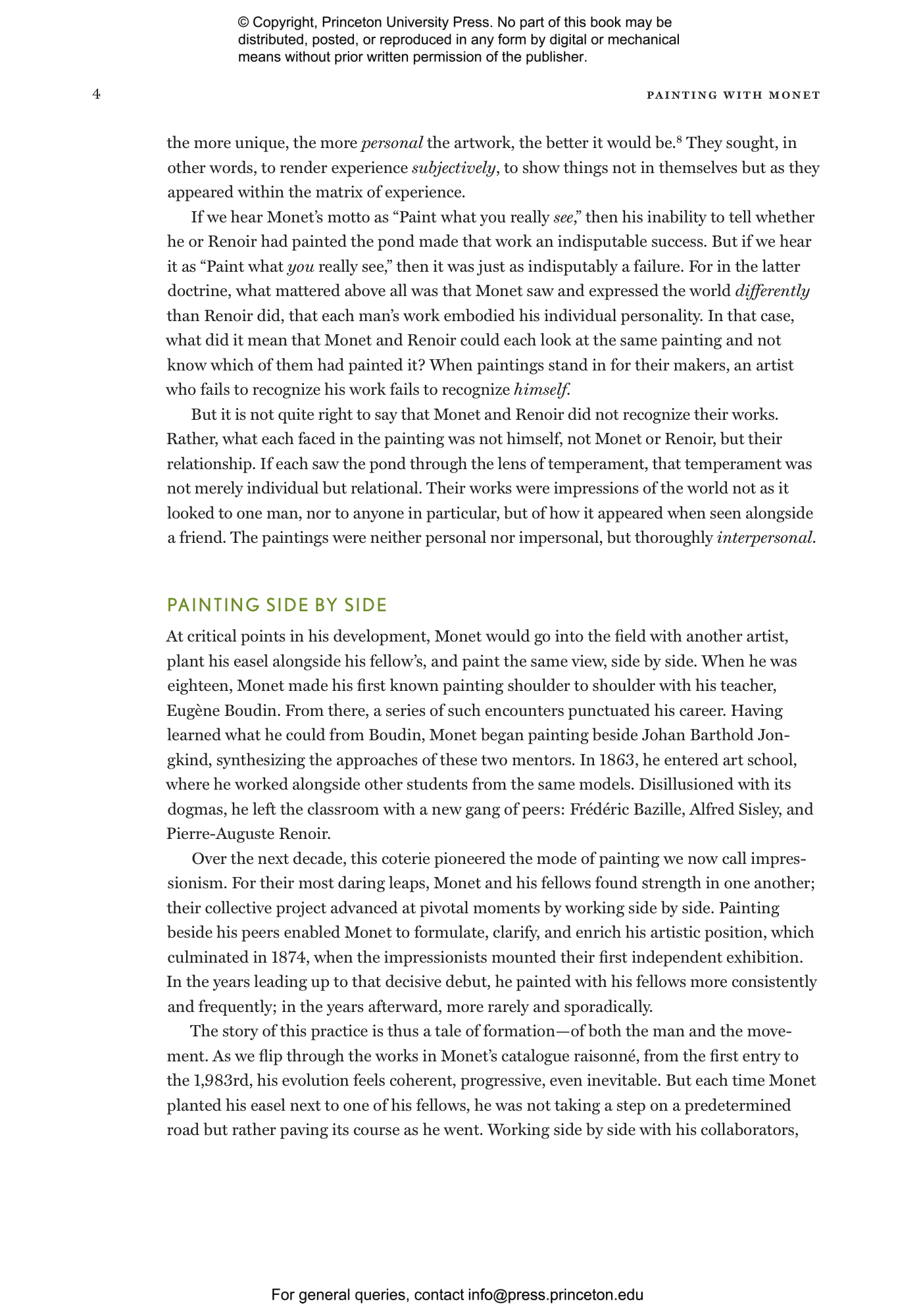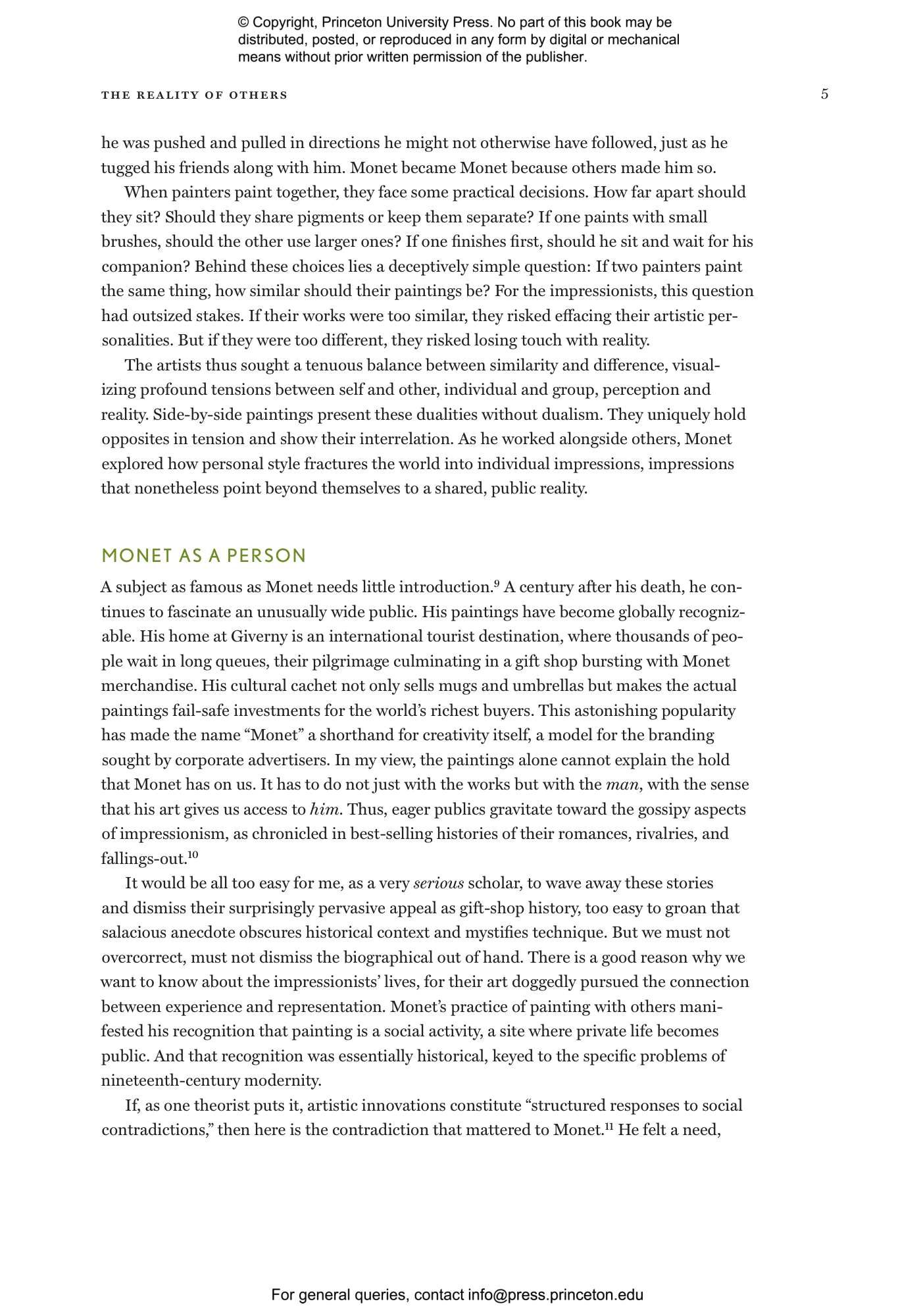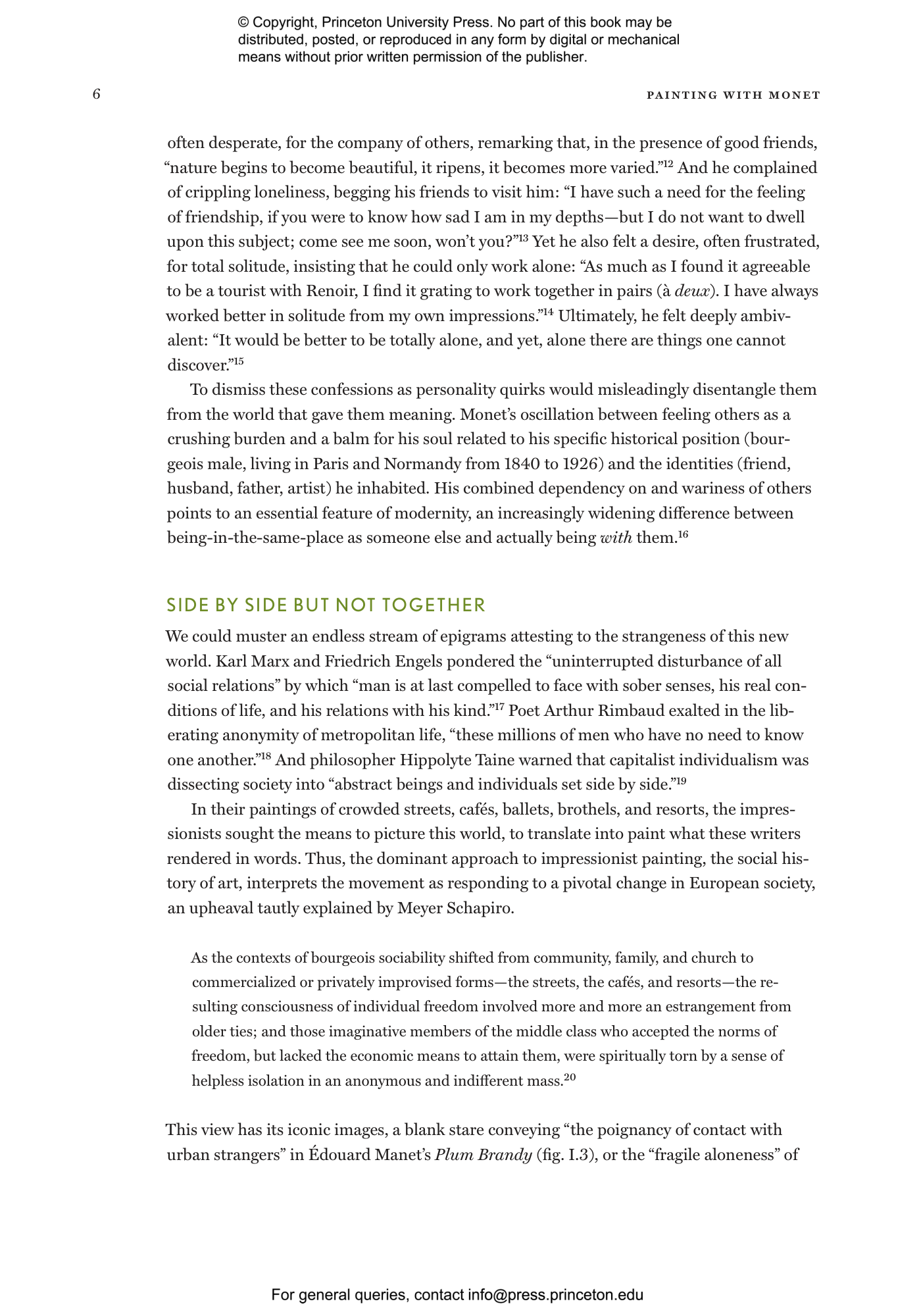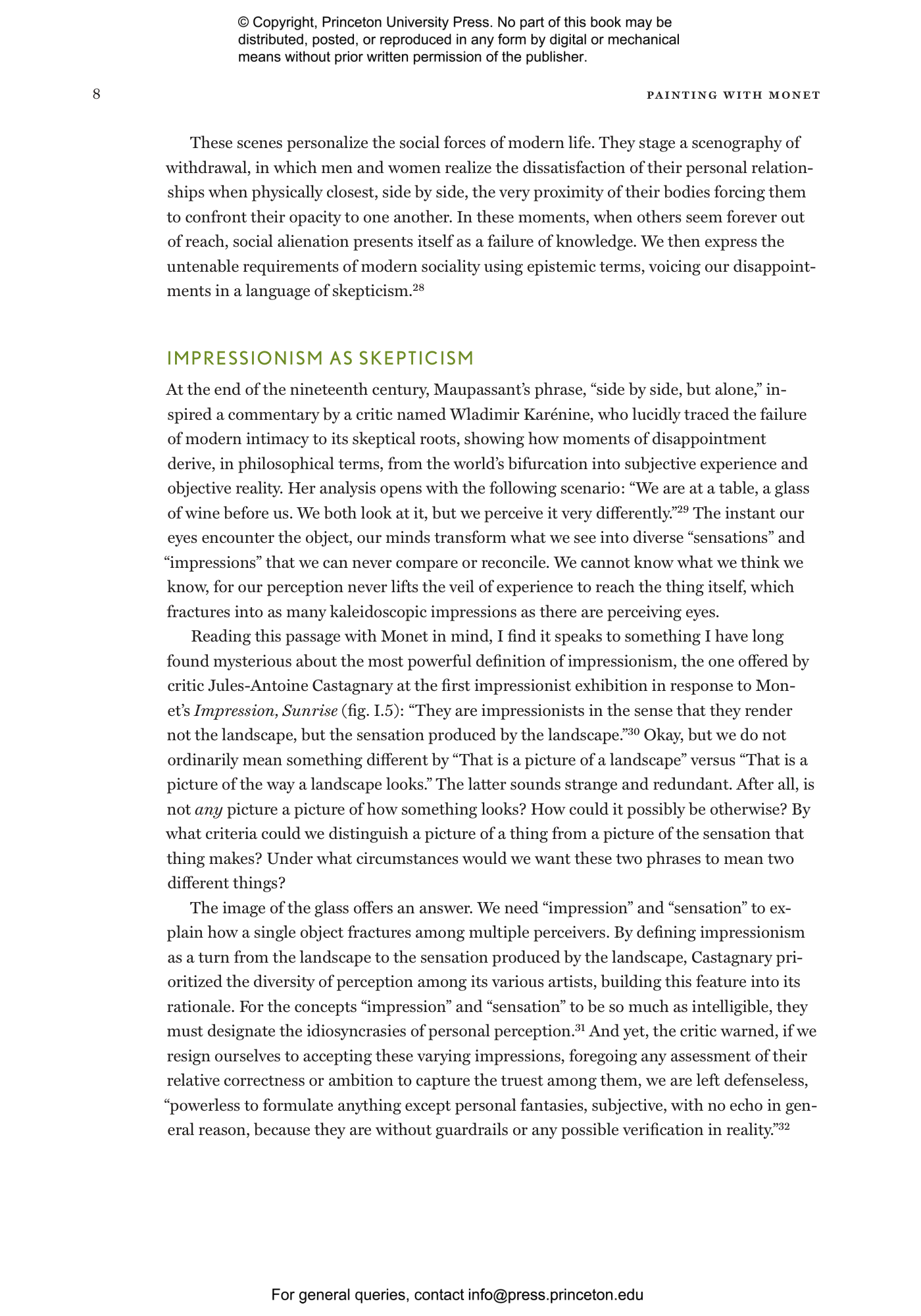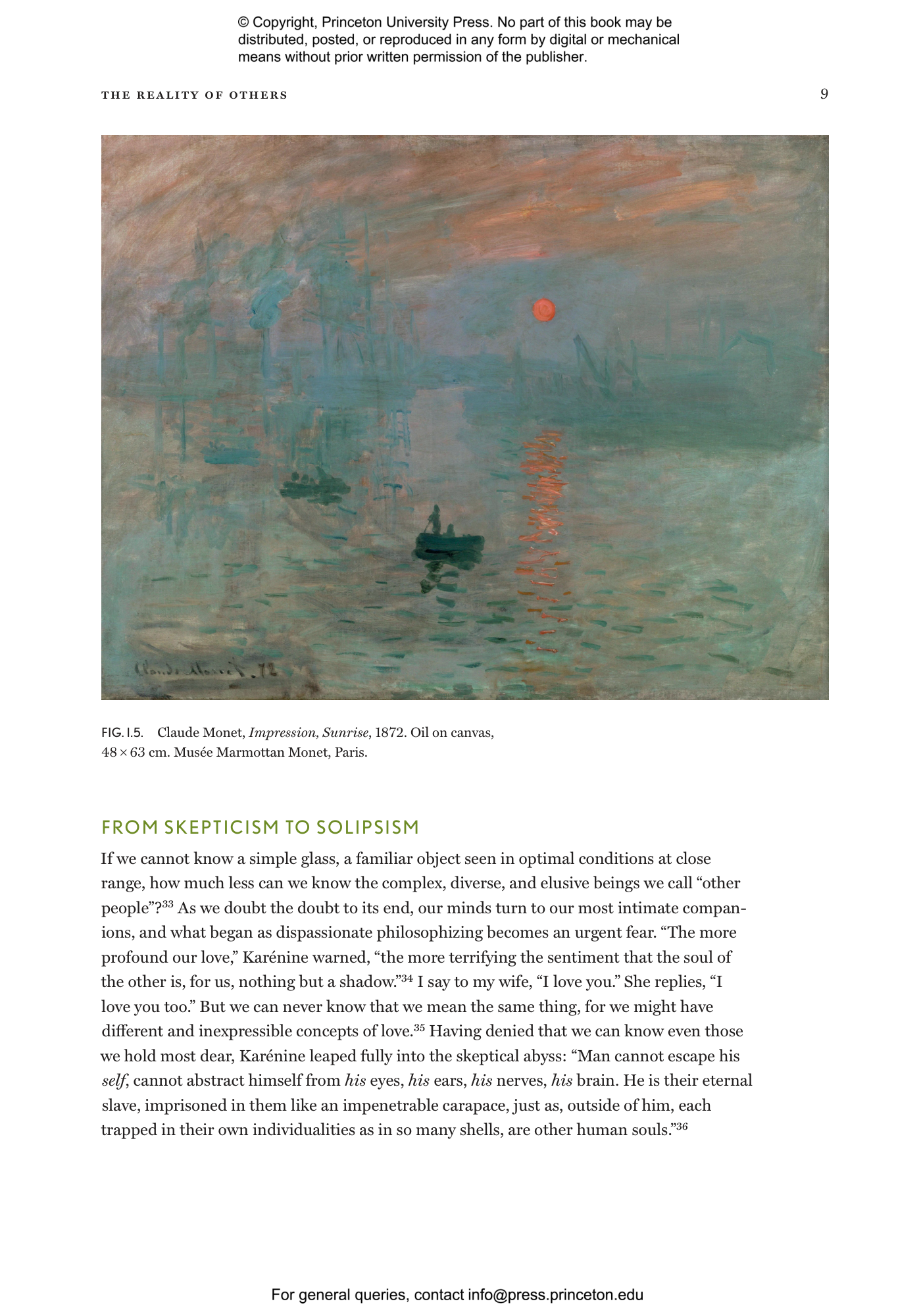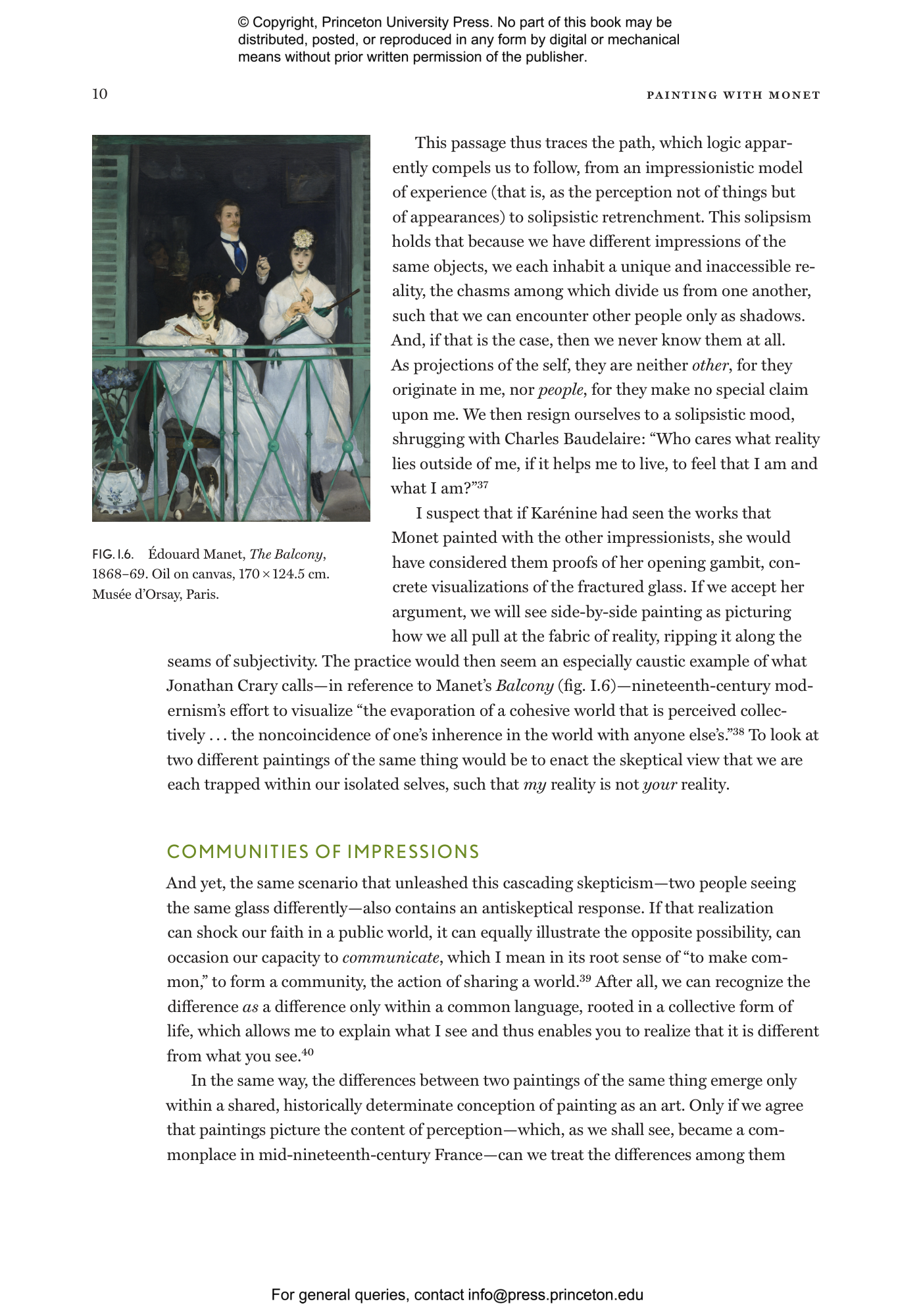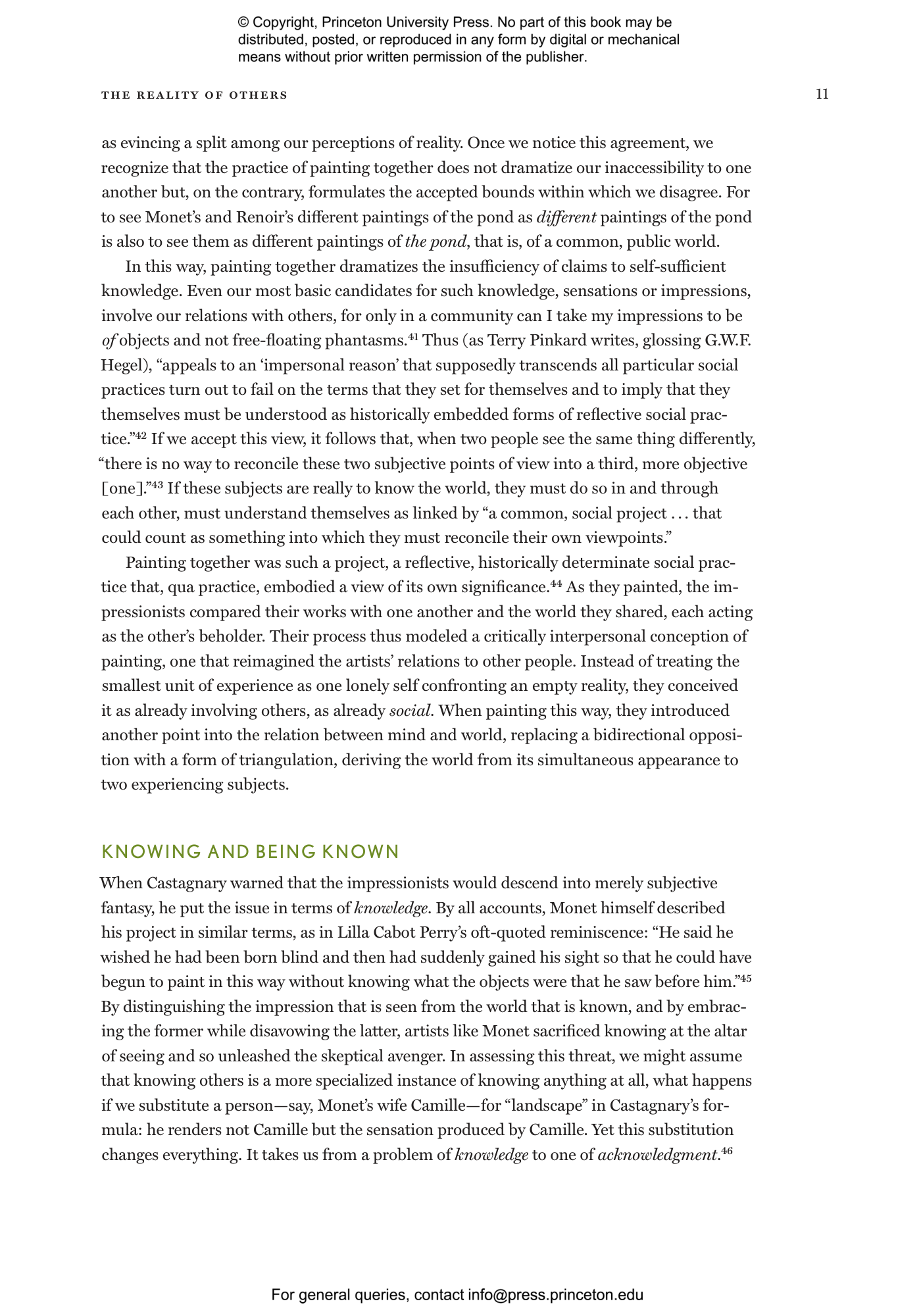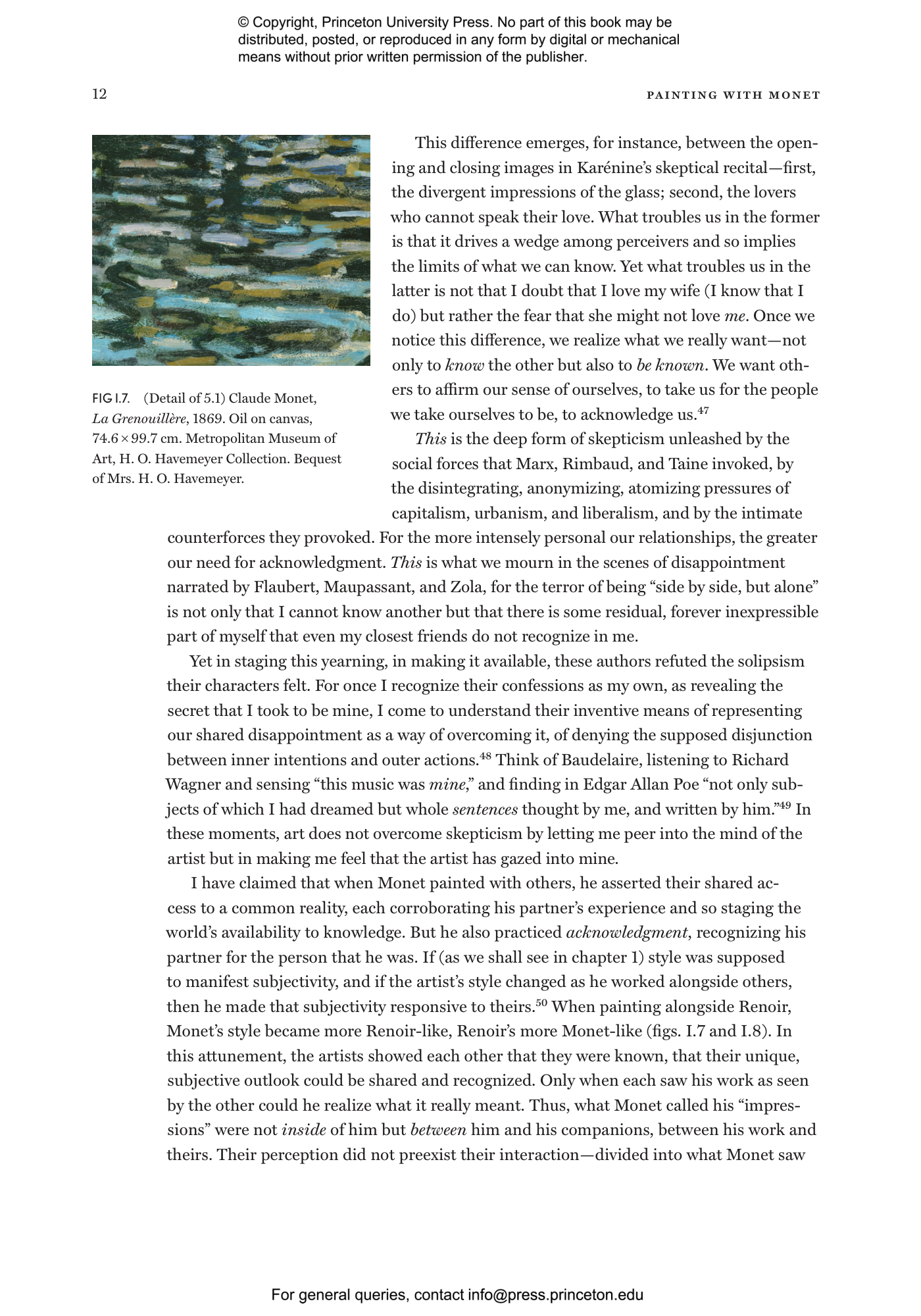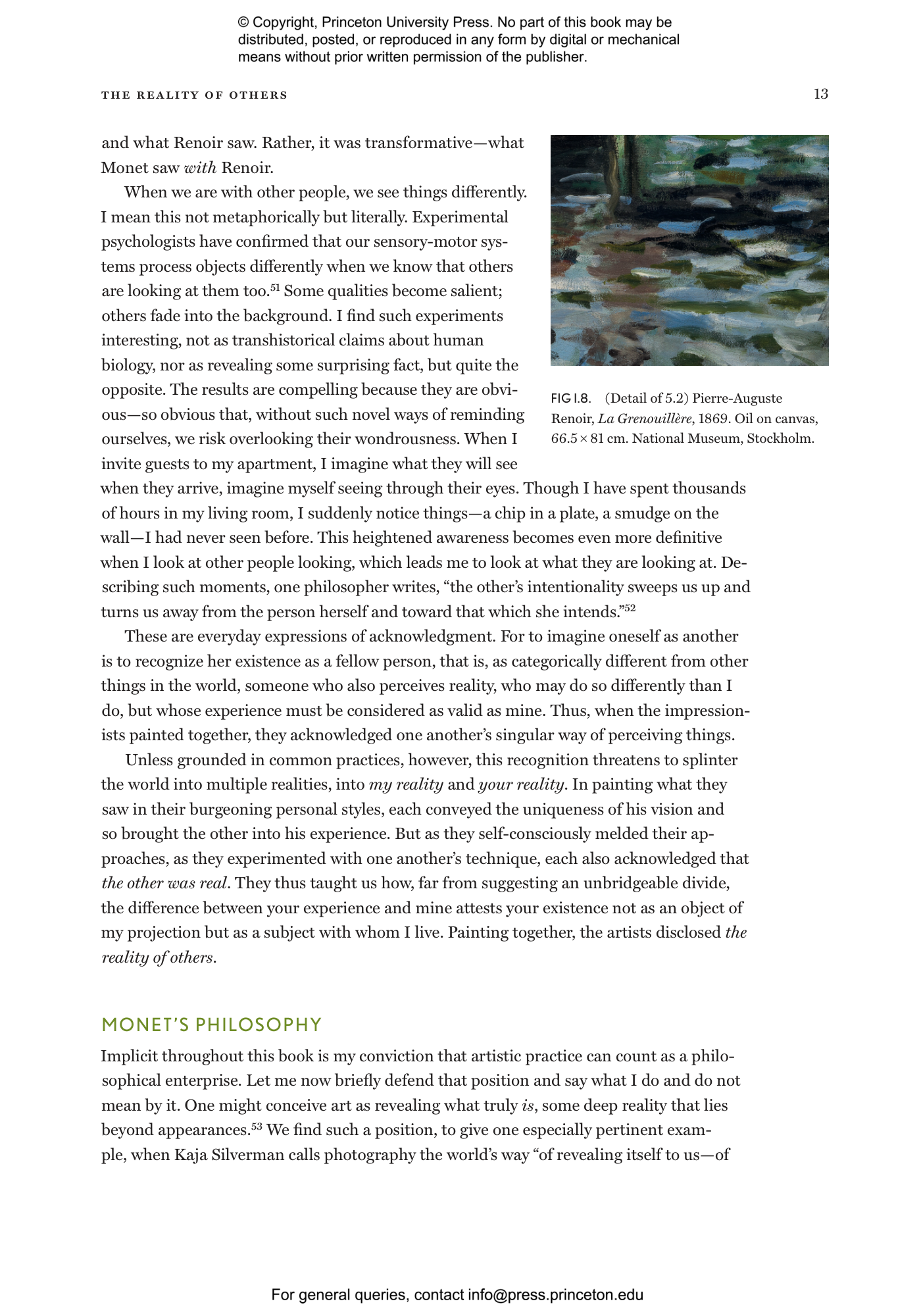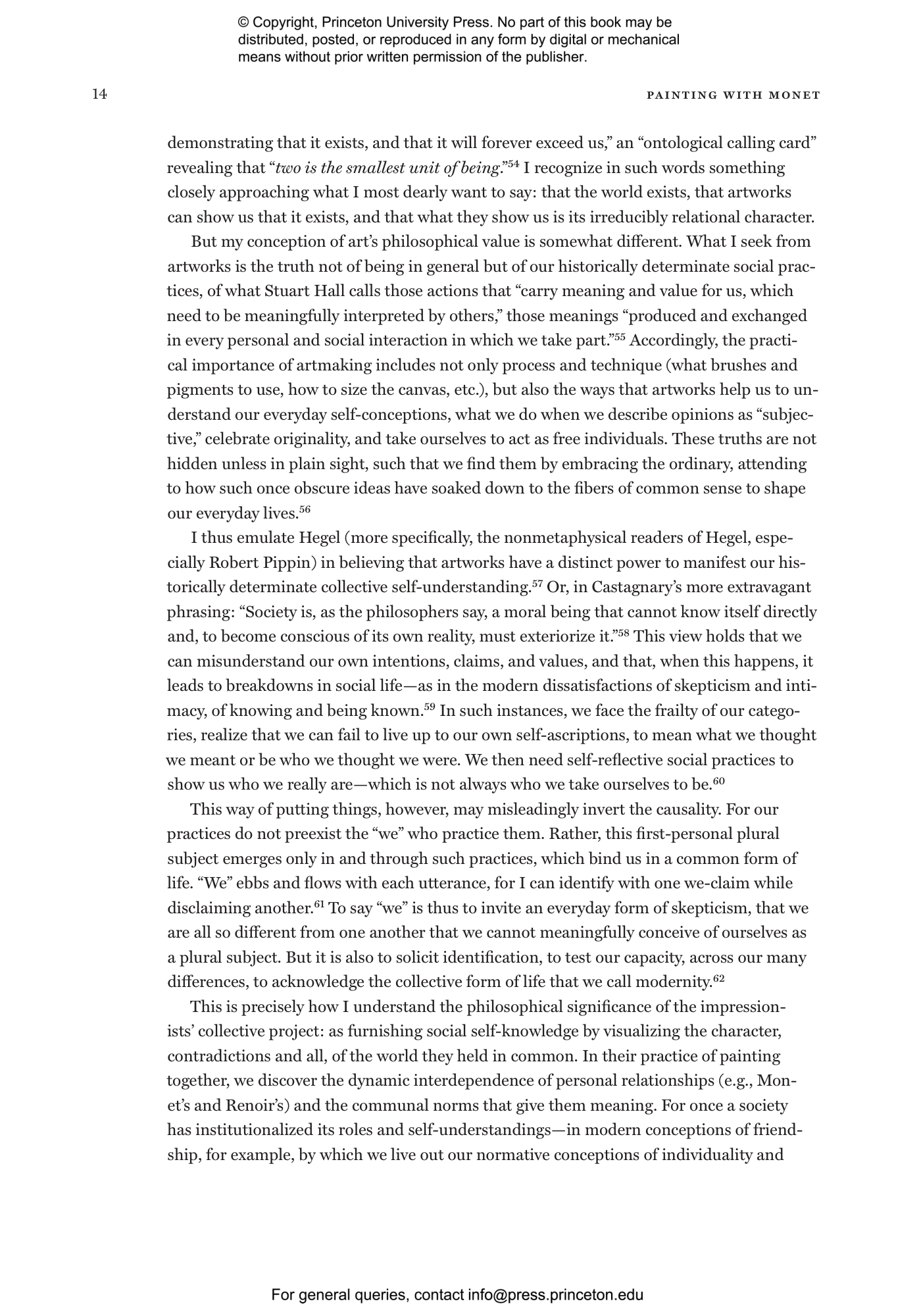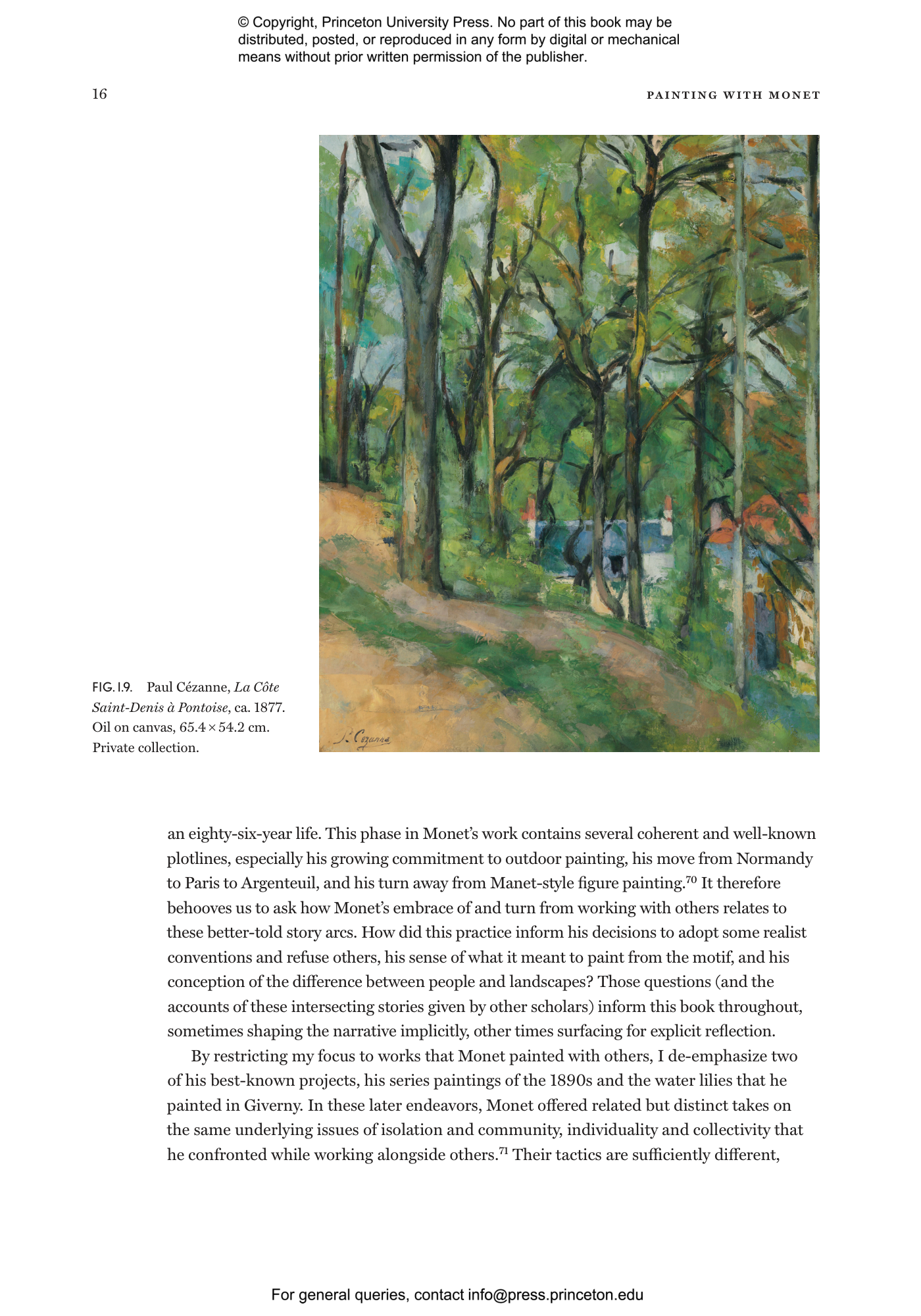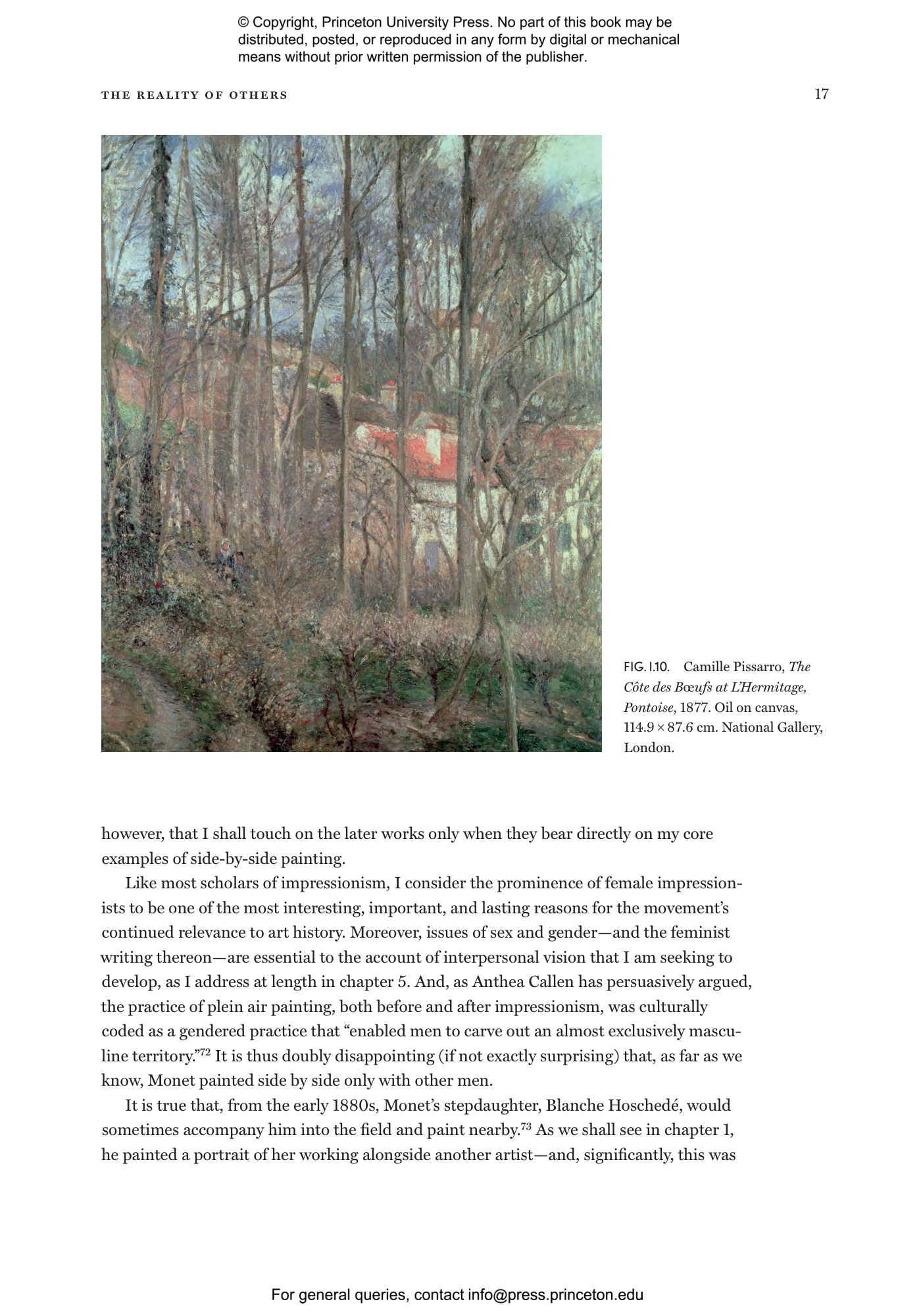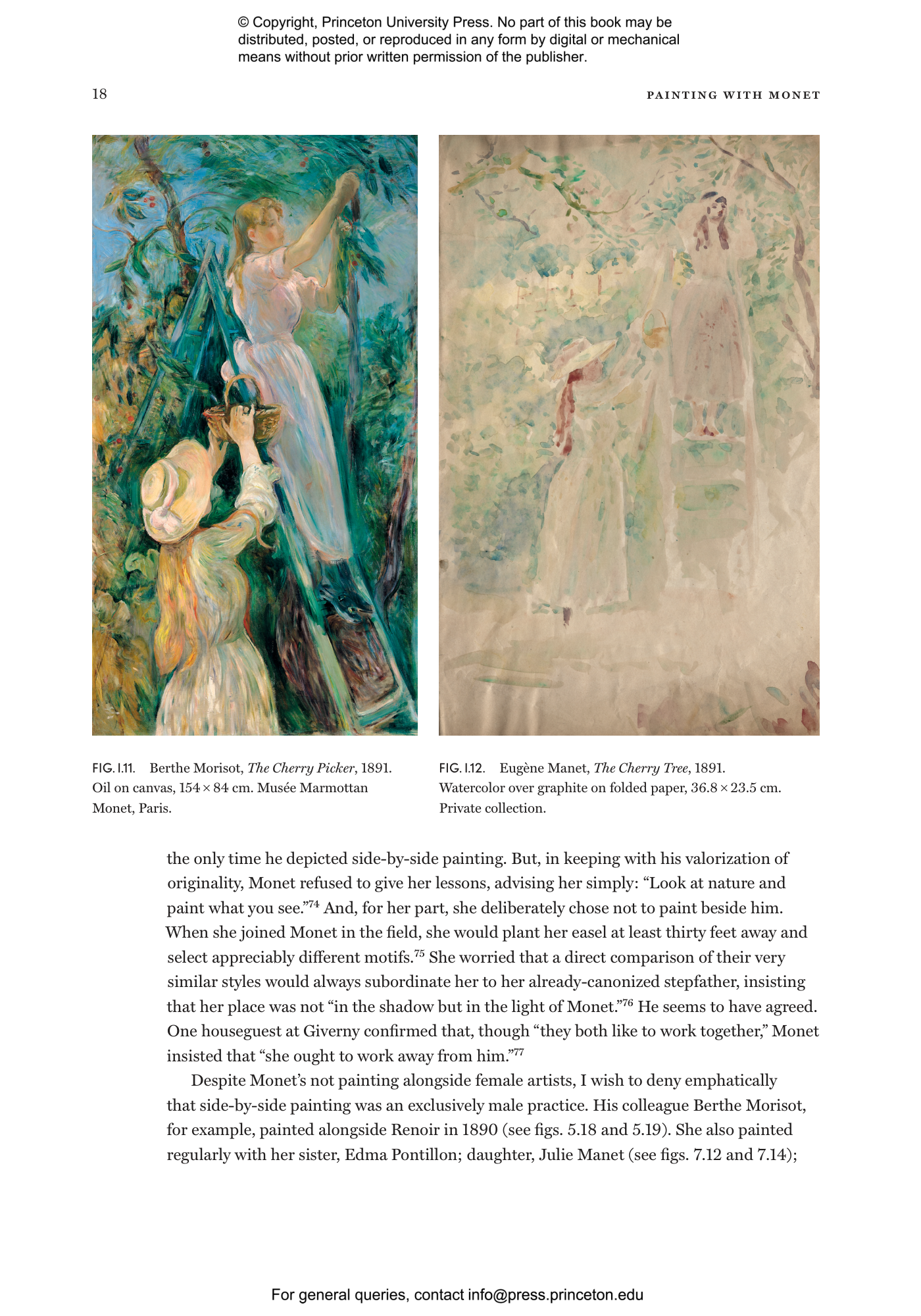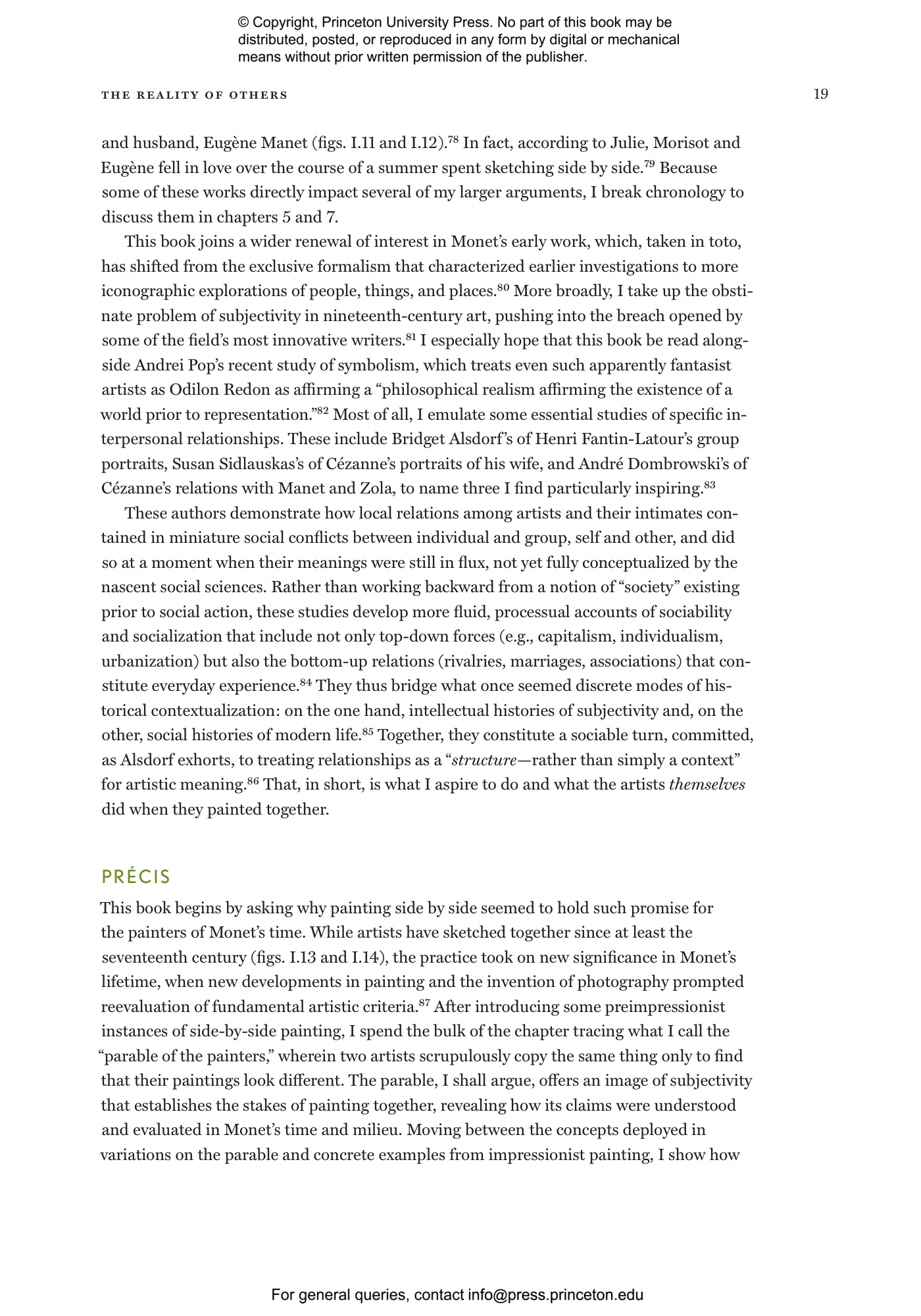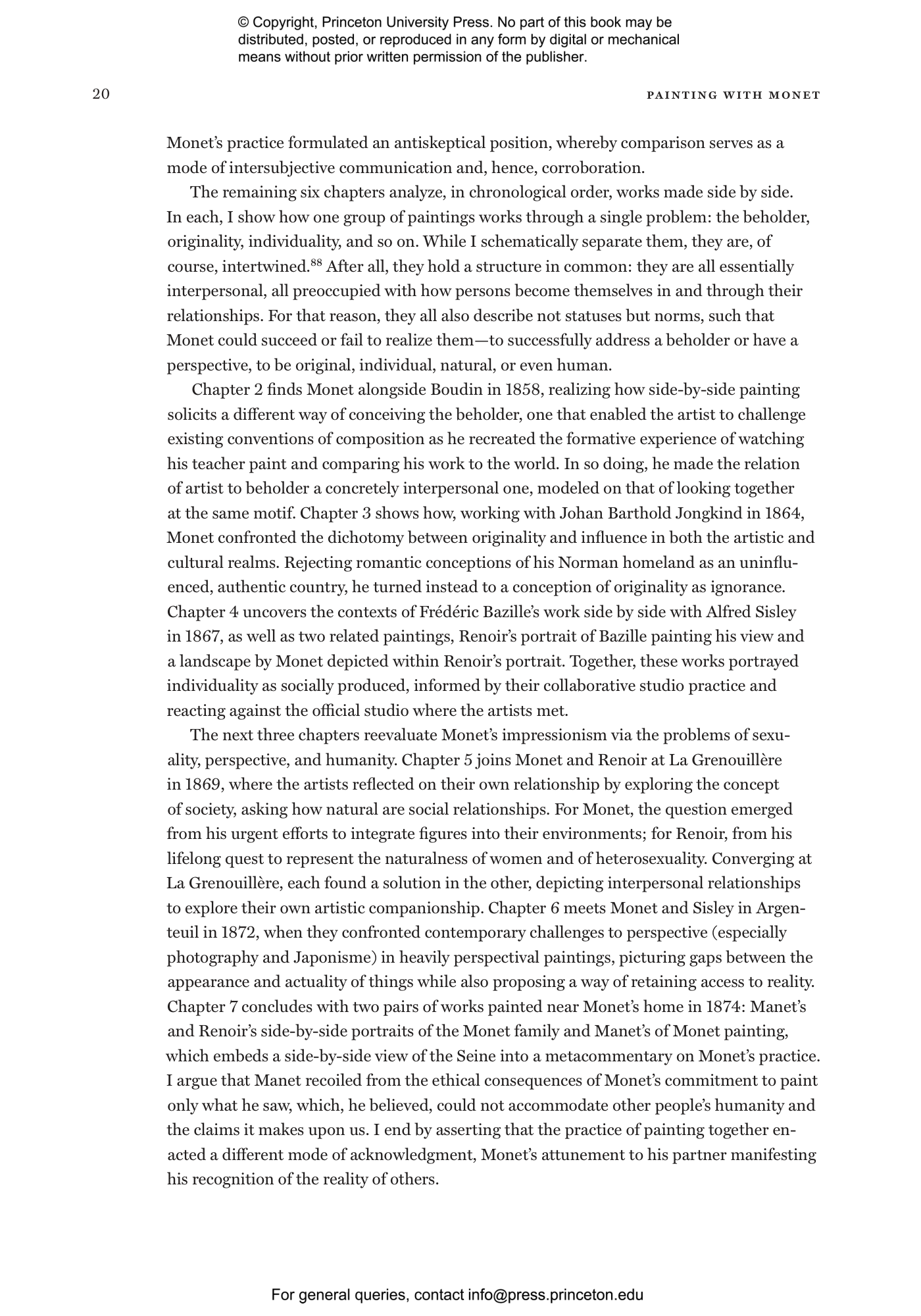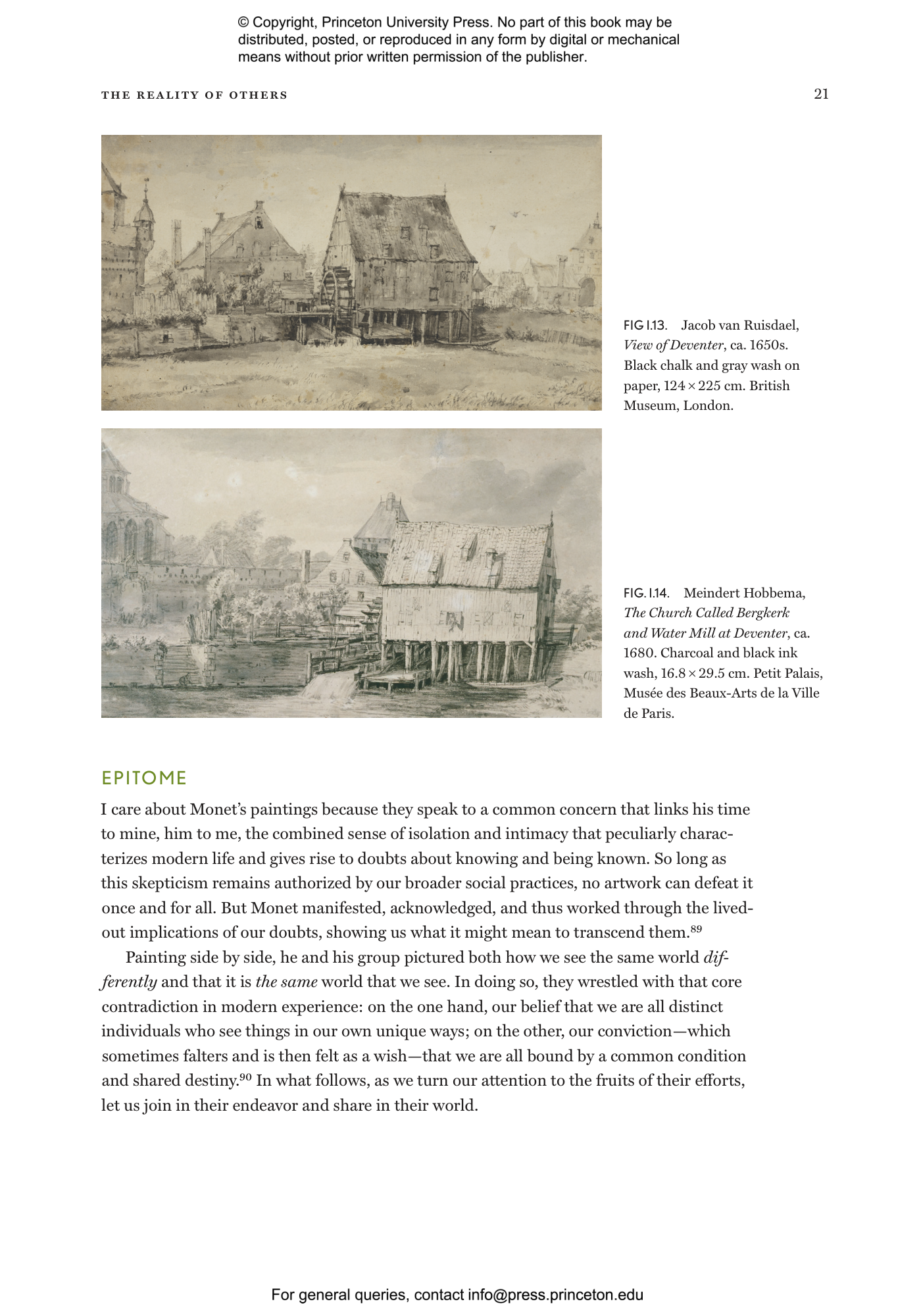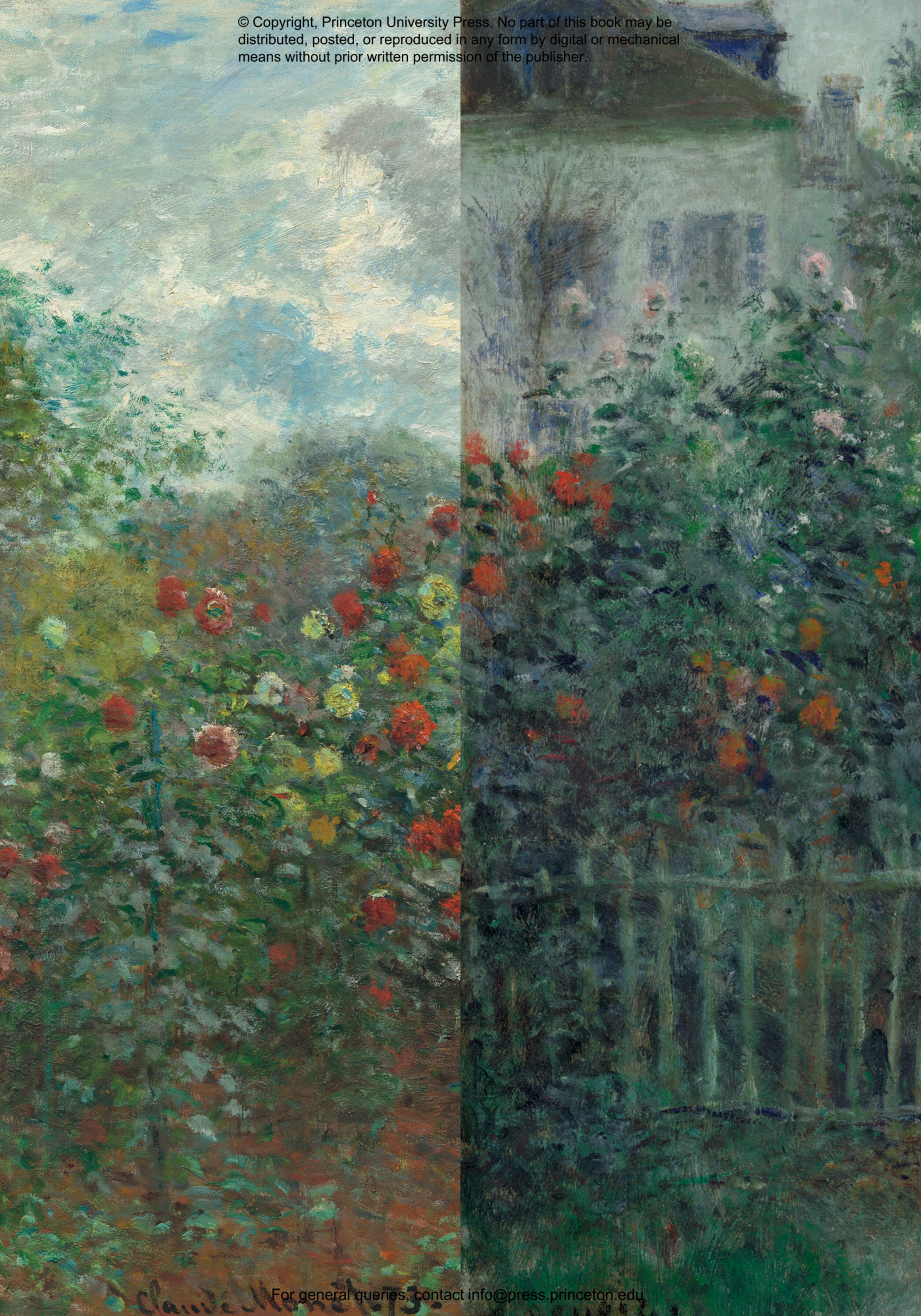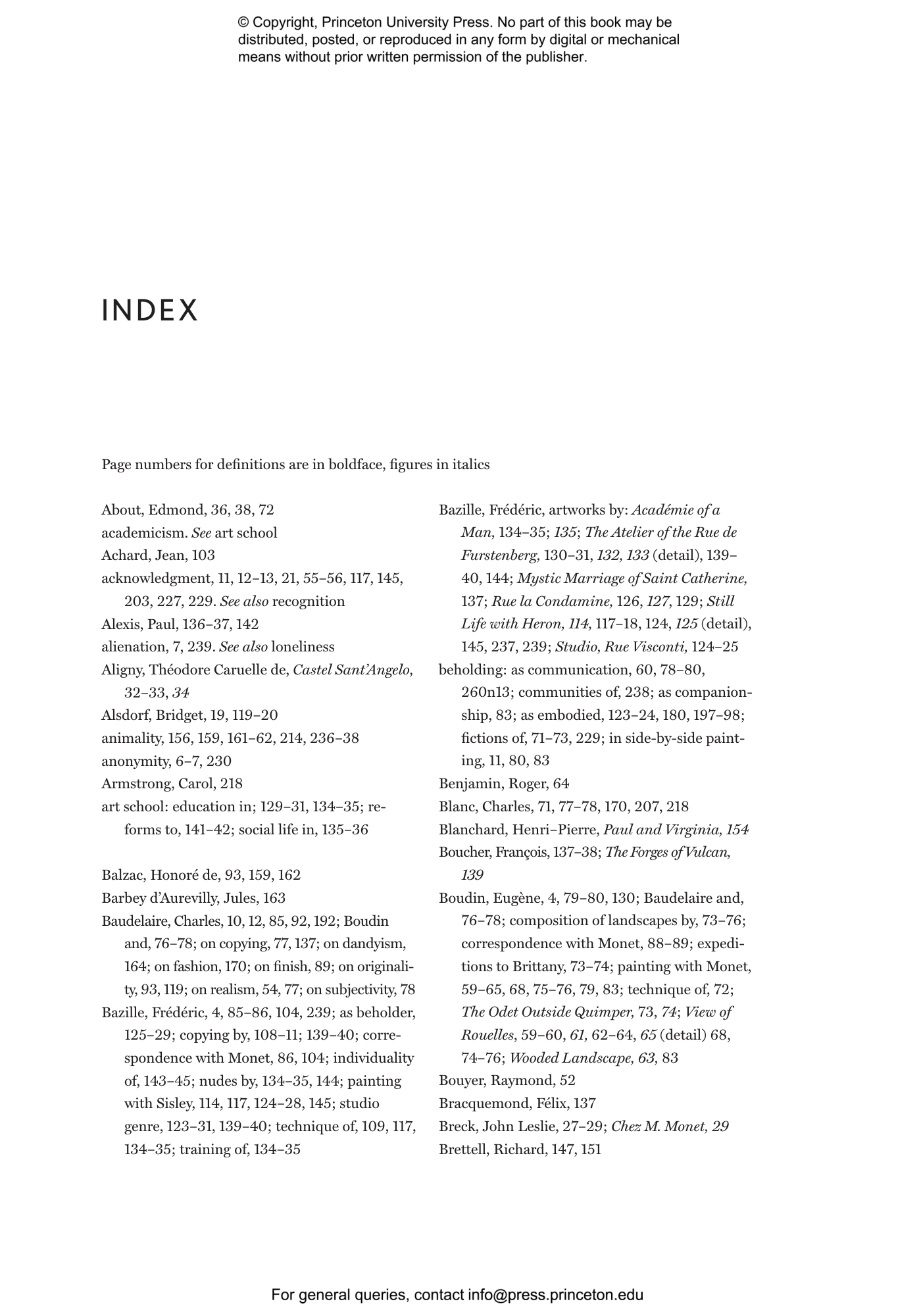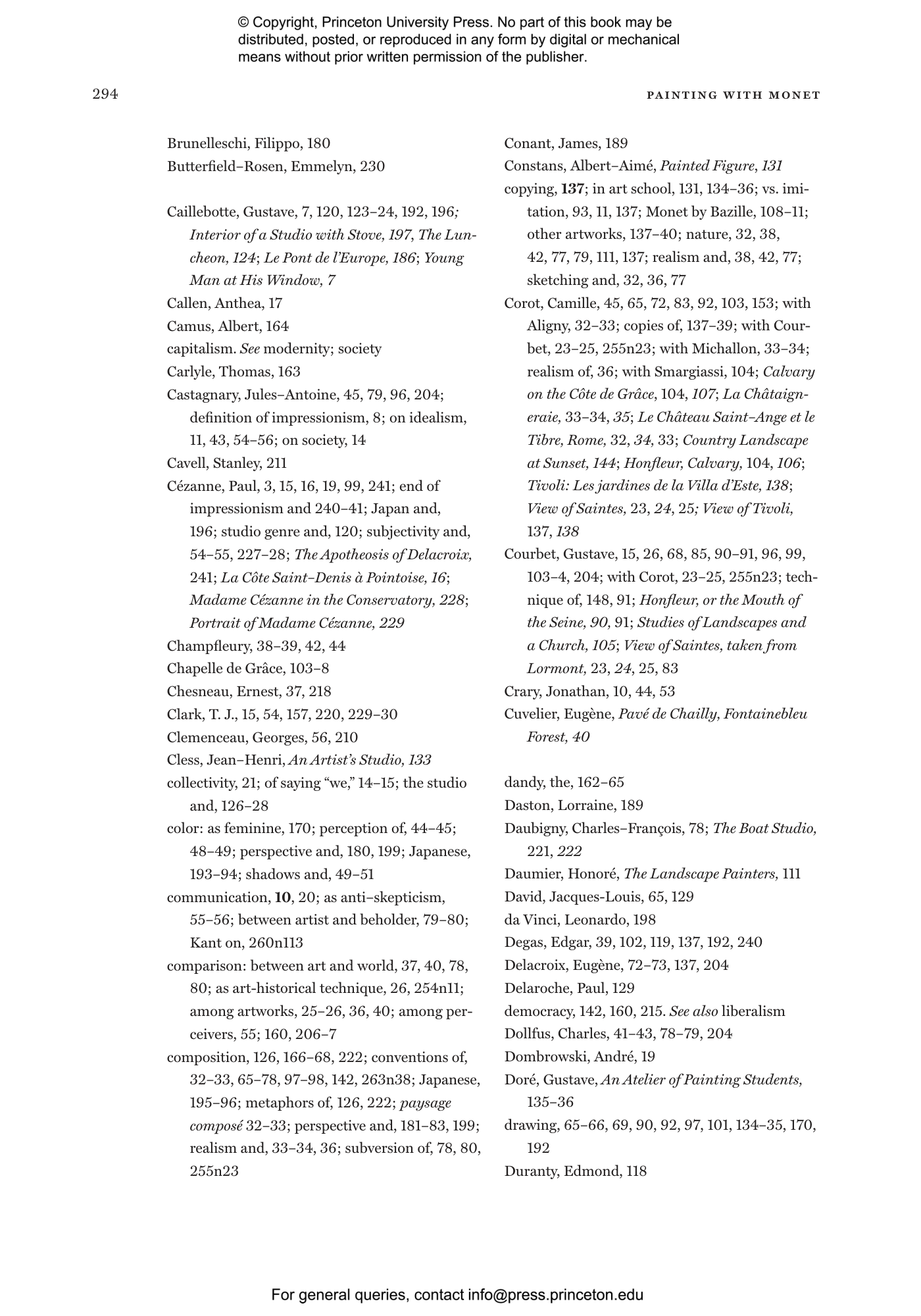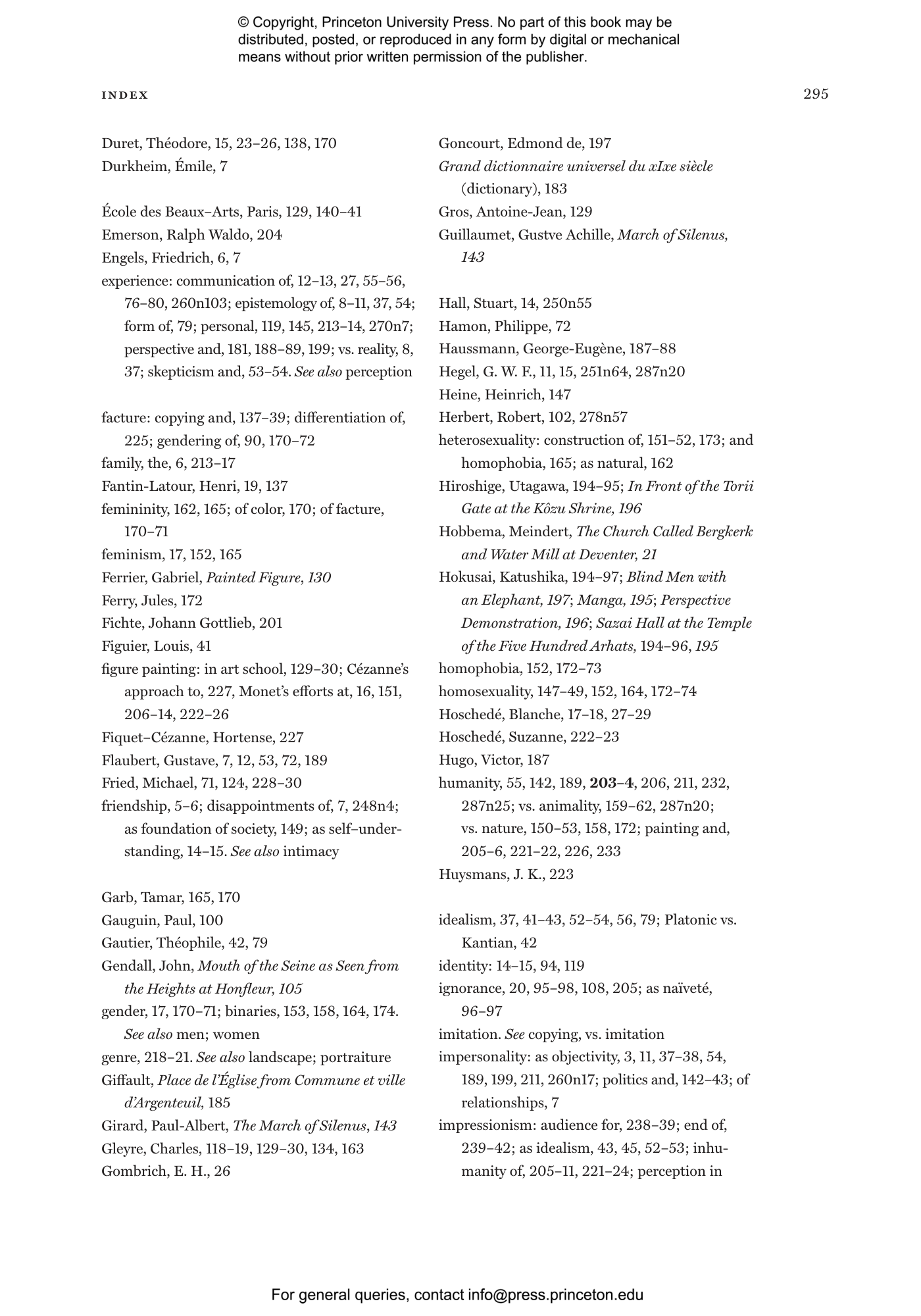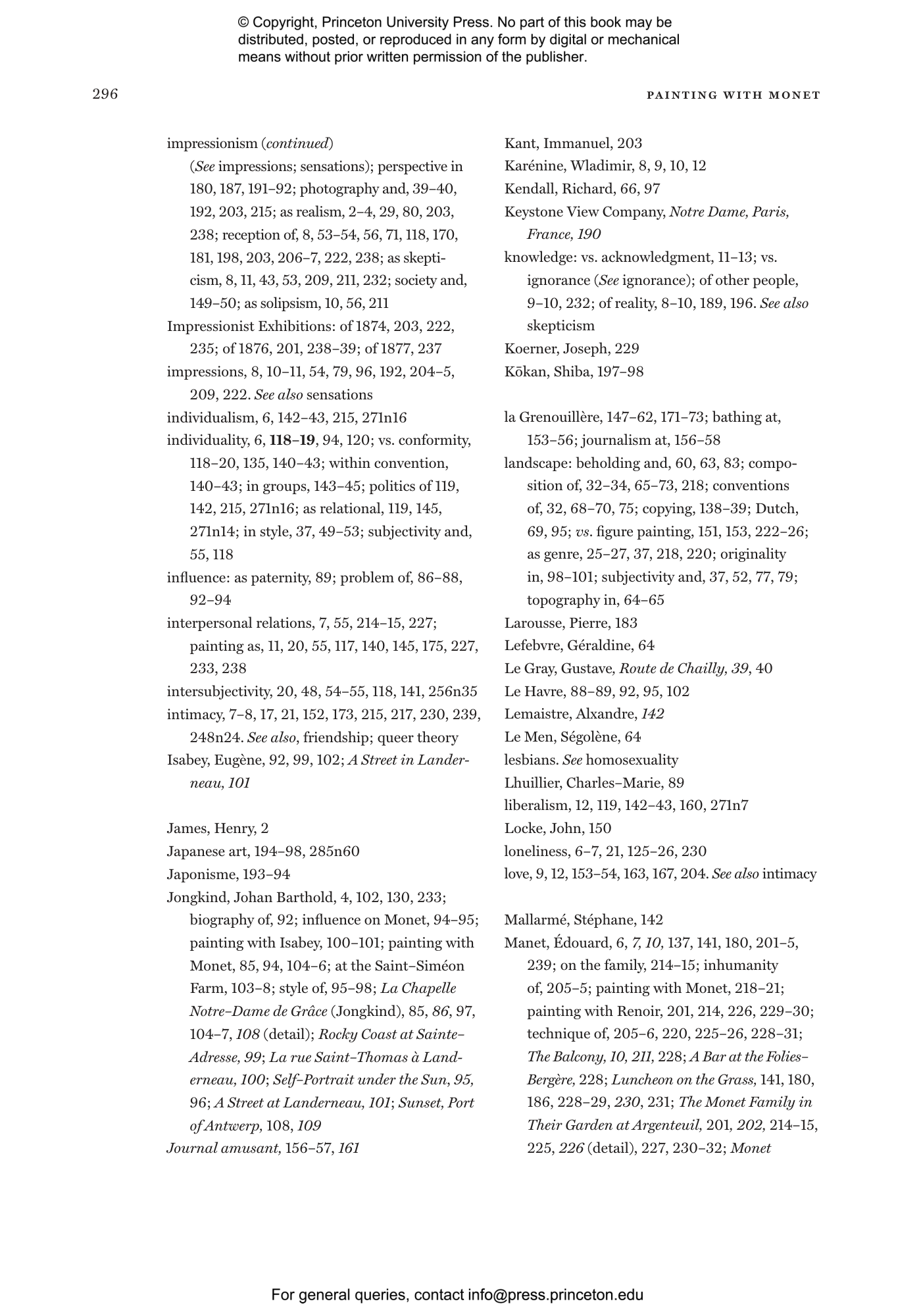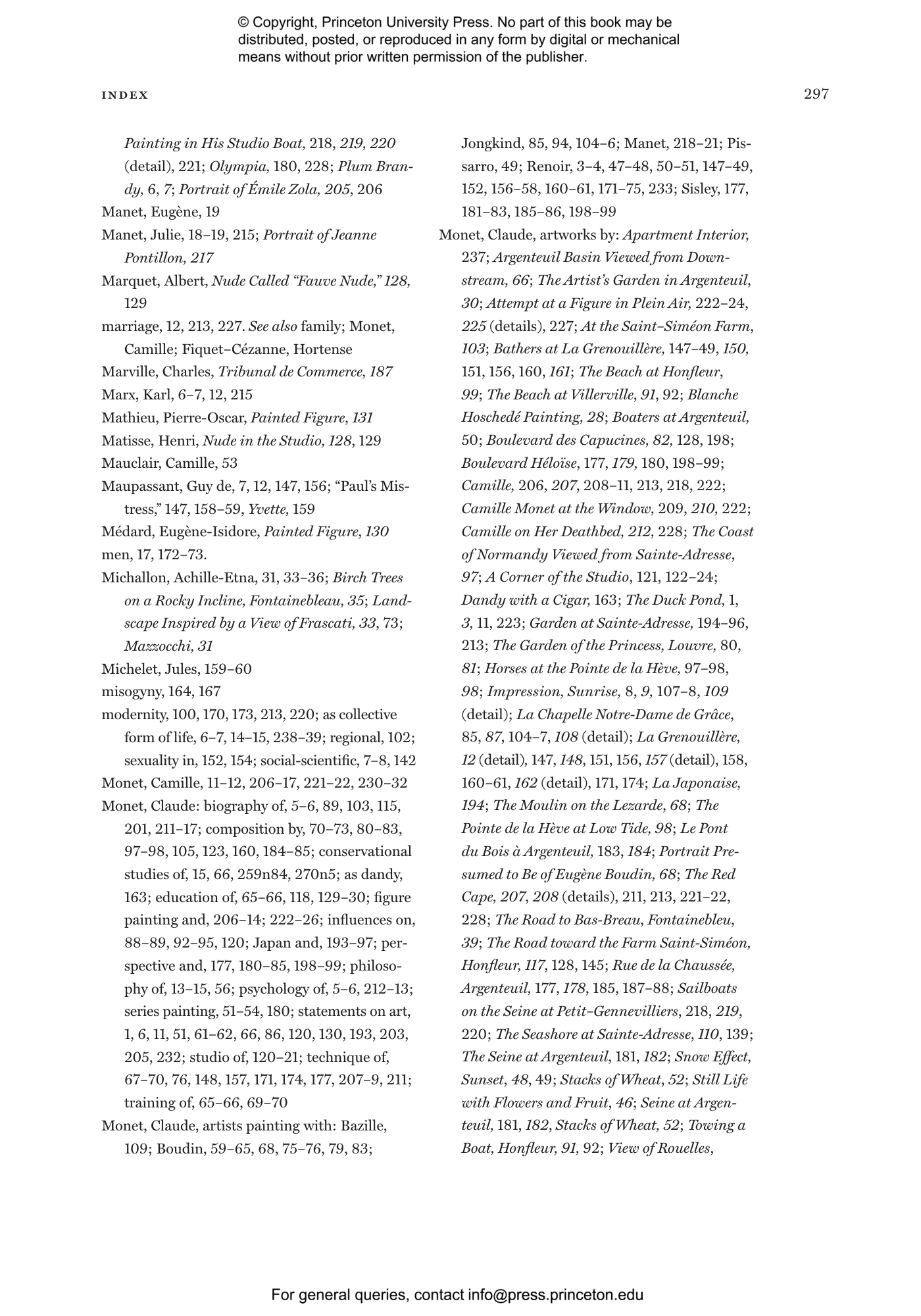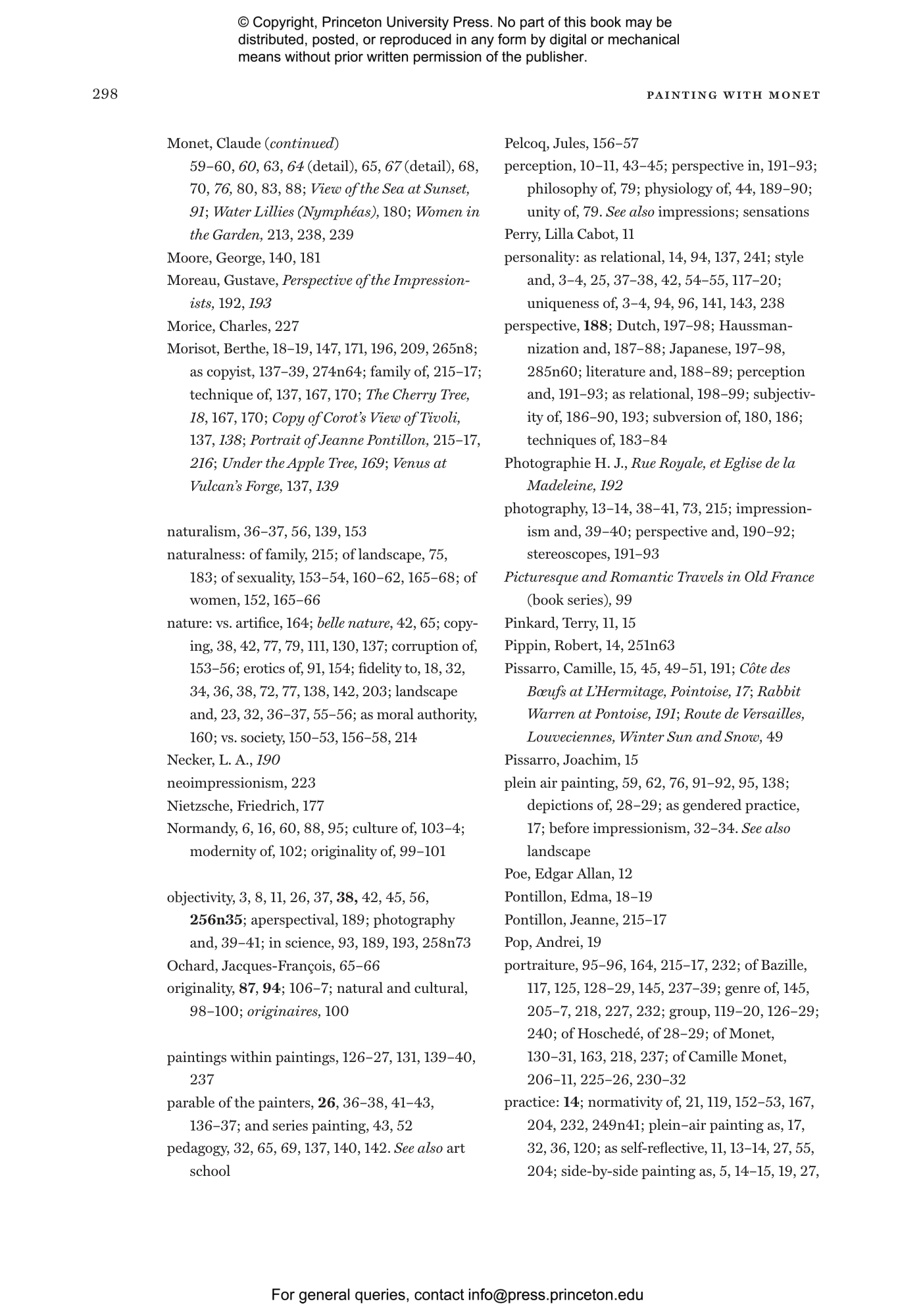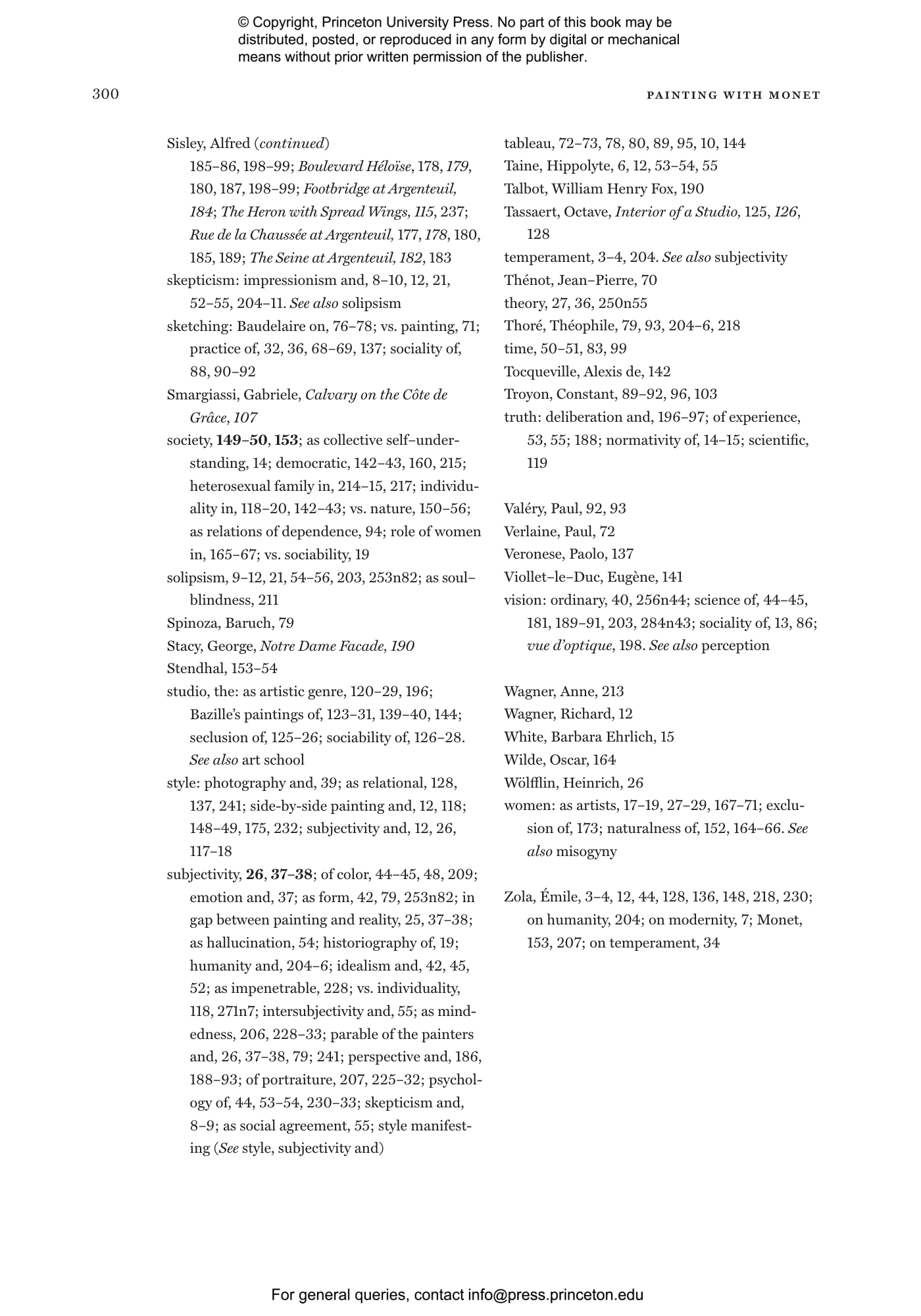At pivotal moments in his career, Claude Monet would go out with a fellow artist, plant his easel beside his friend’s, and paint the same scene. Painting with Monet closely examines pairs of such works, showing how attention to this practice raises tantalizing new questions about Monet’s art and about impressionism as a movement.
Is impressionist painting an objective attempt to capture reality as it really is? Or is it a subjective expression of the artist’s unique way of perceiving things? How can artists create a movement without conformity extinguishing individuality? Harmon Siegel reveals how Monet explored problems like these in concrete, practical ways while painting alongside his teachers, Eugène Boudin and Johan Barthold Jongkind; his friends, Frédéric Bazille and Pierre-Auguste Renoir; and his hero, Édouard Manet. At a time of major cultural upheavals, these artists asked how we can know reality beyond our personal perception. Siegel provides new insights into the aesthetic, philosophical, and ethical stakes for these painters as they responded to a rapidly changing society.
Beautifully illustrated, Painting with Monet sheds critical light on how Monet and his fellow impressionists, painting side by side, professed their capacity to know the world and affirmed their belief in what Siegel calls the reality of others.
Harmon Siegel is a Junior Fellow at the Harvard Society of Fellows. His writing has appeared in publications such as the Art Bulletin, Artforum, and American Art.
"Impressionism, in its emphasis on subjectivity, lends itself to the notion of the individual genius. Siegel delves into Monet’s habit of painting identical scenes alongside his peers and asks how this collaborative practice might change our understanding of the movement."—Apollo Magazine
“At this point in time, it’s hard to imagine anyone saying anything new about impressionism. But Harmon Siegel’s Painting with Monet manages that and more, offering an original perspective on the pictorial and human relations among the painters—Monet as the central figure but also Boudin, Jongkind, Bazille, Renoir, Sisley, and finally—not an impressionist but a basic term of reference for the younger painters—Manet. Siegel’s arguments are subtle, his philosophical sophistication is impressive, and his readings of individual paintings are models of close description. In short, this is an important contribution to our understanding of a crucial passage in the history of modern art.”—Michael Fried, author of French Suite: A Book of Essays
“Highly original. By focusing on Monet’s persistent practice of painting side by side with other artists, Siegel unravels one of the core enigmas that has haunted the understanding of impressionism since its inception: what reality do these artists represent? Painting with Monet will remain a necessary touchstone for all future histories of the subject.”—Marnin Young, author of Realism in the Age of Impressionism: Painting and the Politics of Time
“Painting with Monet makes a fascinating case for taking seriously an overlooked aspect within Monet’s oeuvre. For Siegel, the artist’s practice of painting side by side with several of his peers opens onto some of the most vexing issues in impressionist painting, even onto some of the most crucial ethical and philosophical concerns of the day, artistic autonomy and the nature of individual freedom of expression chief among them.”—André Dombrowski, University of Pennsylvania, author of Monet’s Minutes: Impressionism and the Industrialization of Time
